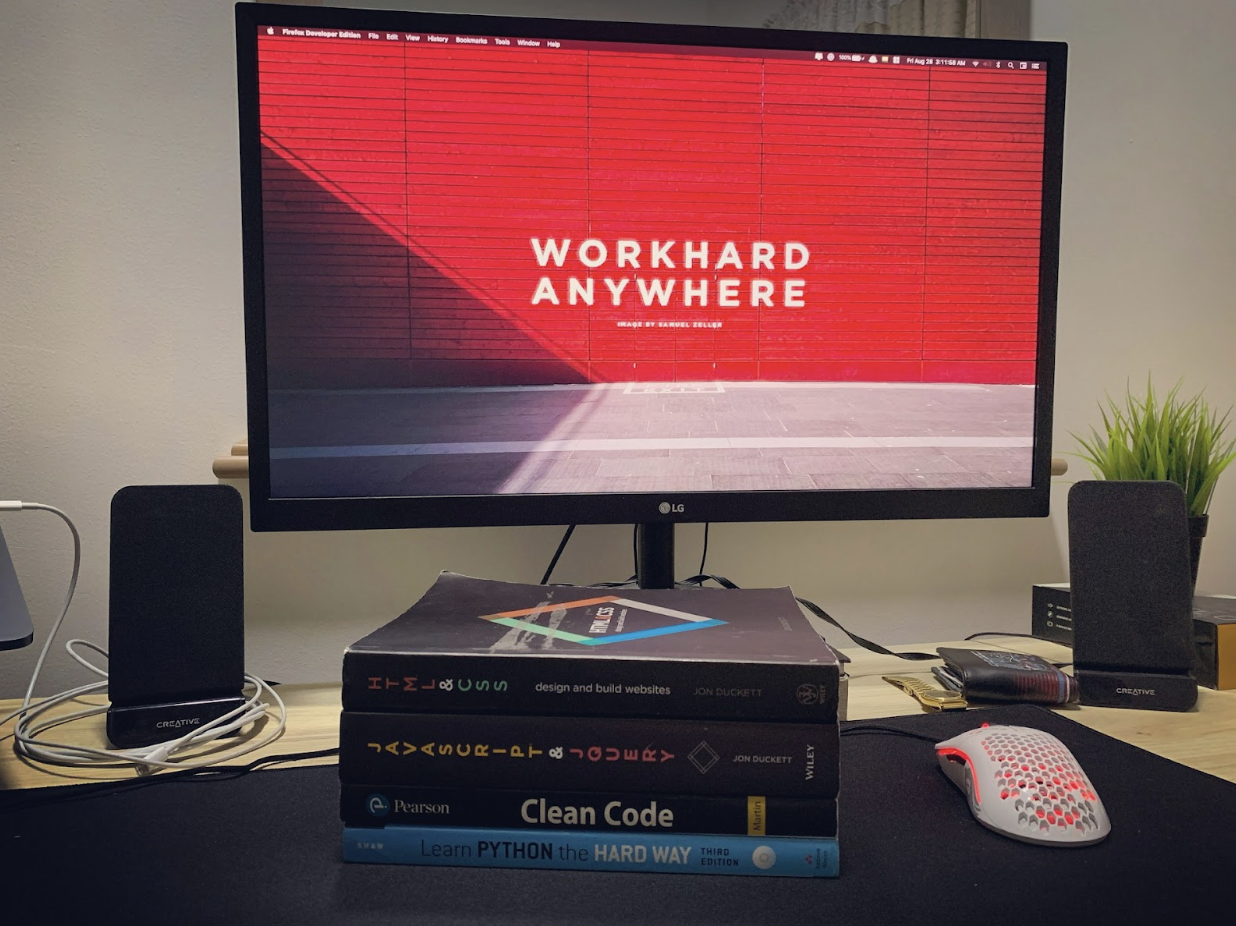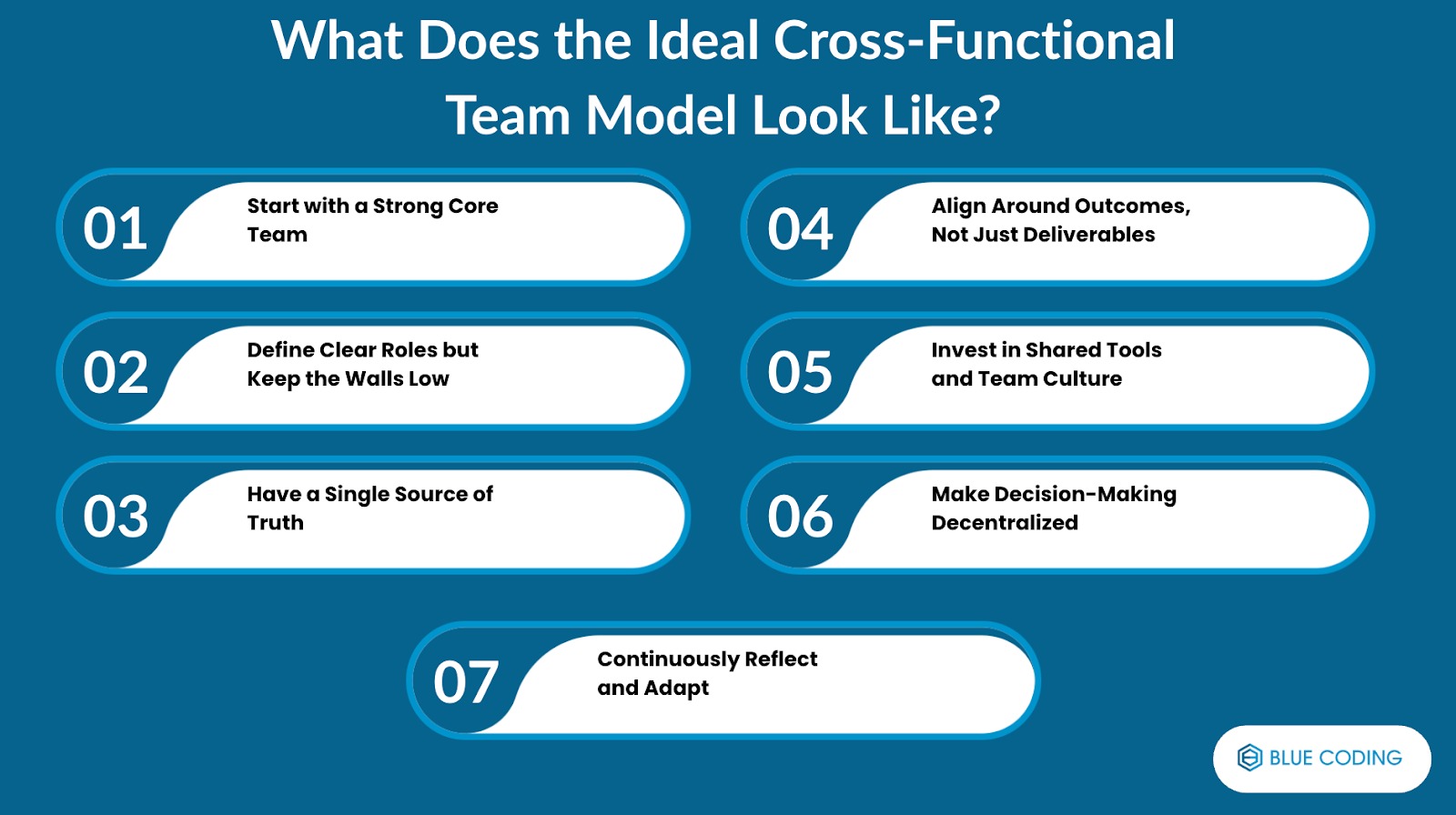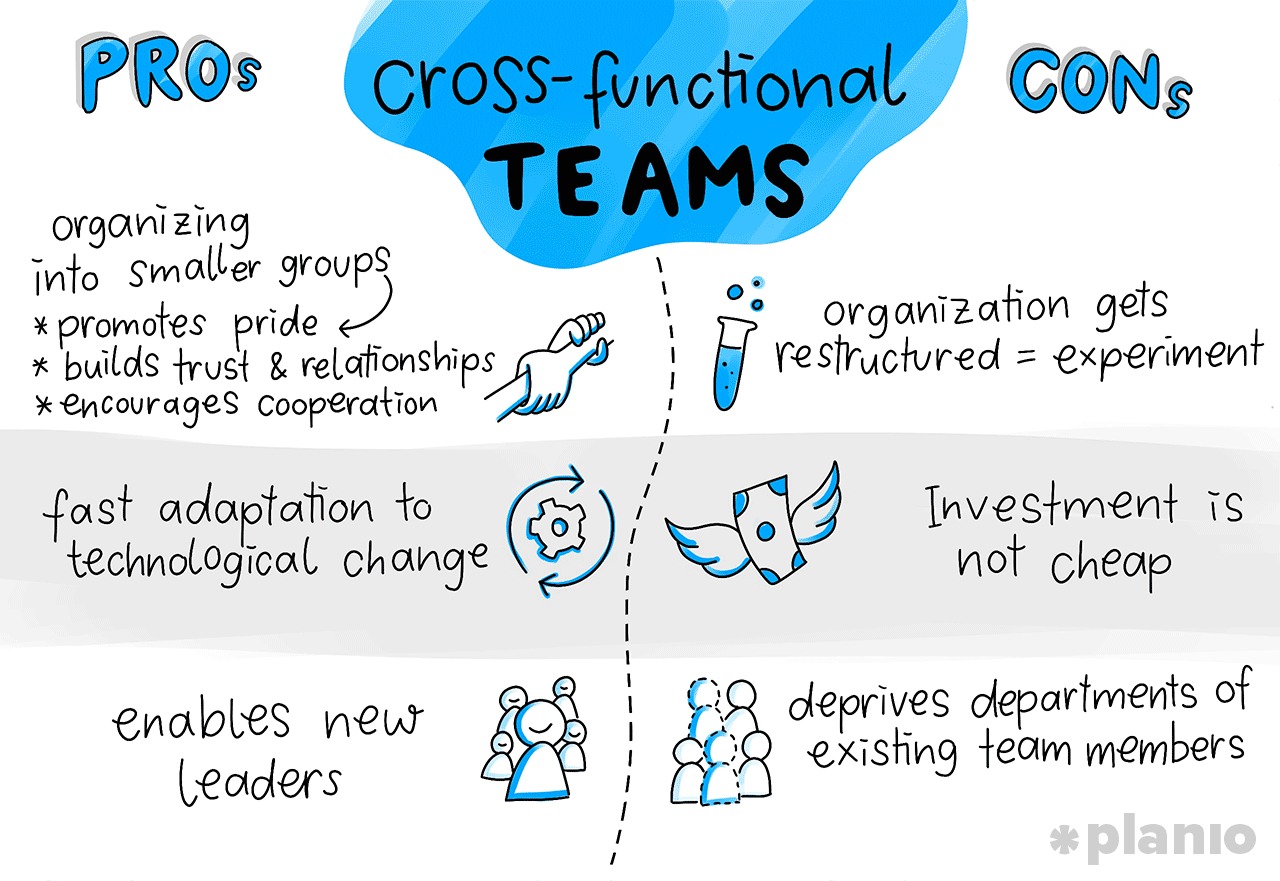 News
News
When timelines are tight and projects are getting more layered, companies can’t afford disjointed teams or slow handovers. That’s where a different kind of team setup steps in, one that’s not just cost-effective, but also built to collaborate from the start. Especially when working with nearshore partners, this setup has started to gain a lot of traction for all the right reasons. In this cross-functional teams guide, we’ll walk through why this model works, when to consider it, and what it looks like in action, without the fluff.
What Exactly Are Cross-Functional Nearshore Teams?
Let’s break it down:
A cross-functional team means a group of people with different skill sets working together. Think of developers, designers, QA testers, DevOps folks. All in one team, each handling their piece of the puzzle, but moving toward the same goal. Now add nearshore to it. That just means the team is based in a nearby country, often in the same or a close time zone as yours.
So when we say Cross-Functional nearshore teams, we’re talking about a full, ready-to-go team of experts from a nearby region who handle everything. From planning and designing to coding and testing. Without you needing to juggle multiple vendors or manage scattered teams. Everyone is aligned. Everyone is close. And everything moves faster.
Creative Cross-Functional Team Building Ideas for Software Outsourcing Success
Create “Tech + Biz” Pairing Days.
Sometimes, all it takes is pairing a backend developer with a UX designer or a project manager with a QA engineer to spark real alignment. These “Tech + Biz” pairing days help teams understand what each function brings to the table. It’s not about micromanaging or teaching each other how to code, it’s about empathy. Let a frontend engineer join a client call, or have a product owner shadow a sprint planning session. This kind of shadowing builds trust and eliminates silos across roles, especially when working across time zones and cultures.
Run Cross-Discipline Hackathons.
Instead of traditional hackathons, structure yours around business challenges and mix up the teams. Don’t let developers huddle with only other developers. Create groups with one UI/UX designer, one backend engineer, one QA, one project manager, and one data analyst. Give them a problem, maybe it’s automating a client onboarding process or creating a lightweight internal tool. These mini-projects turn into low-risk collaboration zones where real cross-functional dynamics get tested, minus the production pressure.
Use Rotating Ownership Models.
Cross-functional teams don’t always need one fixed leader. Try assigning rotating ownership based on the project stage. During scoping, the product manager leads. When development kicks in, the lead engineer takes over. During testing and QA, hand the ownership to the quality lead. This rotating model not only distributes responsibility but also helps every team member value the full software lifecycle. In an outsourced setup, it makes everyone feel like a stakeholder.
Run “Function Swaps” for One Hour.
This idea may sound unconventional, but it’s incredibly effective. Ask a frontend developer to write a mock test case. Let a QA person design a basic wireframe. The goal isn’t perfection; it’s to get into each other’s headspace. These one-hour swaps remove the “that’s not my job” attitude, especially when people are working remotely or nearshore. They bring lightness to team culture while reinforcing how interconnected each function really is.
Hold “Outcome Retros” Instead of Just Sprint Retros.
Sprint retros are common, but they often stay tactical. Cross-functional teams need to zoom out. Set time for an “outcome retro” once every two months to reflect not on tasks, but on impact. What did the last delivery solve for the client? Which function’s input made the biggest difference? Who went above and beyond to unblock a process? When outsourcing software development, recognizing these collaborative wins helps your external and internal teams feel like one unit.
Use Culture and Language Bridges.
With outsourcing, teams often come from different regions, maybe your QA team is in Colombia, while your engineering squad is in Poland. Celebrate that. Run short “Culture 101” sessions where teammates introduce food, expressions, or holidays from their region. Add a shared glossary for terms your teams use differently. Small things like this reduce communication friction and help cross-functional teams speak the same language, literally and professionally.
Encourage “Design-First” Weekly Reviews.
Don’t just review code, but review the entire experience. Hold weekly cross-functional reviews where design comes first. Show the UI mockups. Walk through the user journey. Let developers ask questions about the flow before any implementation begins. This helps every function prioritize user impact over just tickets and tasks. It also gives outsourced developers context, which often gets lost in email threads or Jira boards.
Set Up “No Agenda” Collaboration Hours.
Cross-functional magic doesn’t always come from structured meetings. Block out one hour every two weeks where team members can drop into a call; no agenda, just brainstorming or catching up. Maybe your backend lead has an idea for automating code reviews, or your business analyst wants feedback on user stories. These unstructured moments can lead to spontaneous solutions and deeper professional bonds.
What Does the Ideal Cross-Functional Team Model Look Like?

⇀ Start with a Strong Core Team
At the heart of every effective cross-functional team is a stable core of specialists who understand their roles and know how to collaborate beyond them. Think developers, QA engineers, product managers, UI/UX designers, and maybe even DevOps, all working together under a shared project goal. These aren’t just people thrown into a Zoom call; they’re handpicked for their adaptability and communication. In nearshore settings, this often includes bilingual talent and timezone-aligned roles that can actually talk through issues in real time. The right mix isn’t just skill-based, it’s chemistry, too.
⇀ Define Clear Roles but Keep the Walls Low
Yes, the backend developer should focus on backend tasks, and the QA specialist should own testing. But the real magic happens when these roles are defined and fluid. In a great cross-functional setup, your designer understands dev constraints, your developer asks user-first questions, and your PM thinks like a tech lead. Everyone stays in their lane but the lanes are collaborative. That flexibility matters even more in outsourced setups where time and context-switching can be costly.
⇀ Have a Single Source of Truth
Whether it’s a Notion board, Jira dashboard, or simple Google Docs, a centralized place for tasks, updates, and documentation is non-negotiable. A well-modeled team doesn't waste time chasing updates or aligning across Slack threads. Instead, they rally around one source of truth that keeps everyone accountable. It sounds simple, but this one move saves hours of repeated back-and-forth and avoids unnecessary blockers, especially when part of the team is nearshore and not in your direct timezone.
⇀ Align Around Outcomes, Not Just Deliverables
The ideal team model doesn’t just track who’s building what. It aligns around why it matters. Cross-functional teams that perform well are the ones that treat business goals as their own. This only happens when leadership shares context clearly, and developers are brought in early, instead of only when it's time to code. In outsourced settings, this alignment is what separates a tactical team from a strategic one. Without it, you end up with delivery for delivery’s sake.
⇀ Invest in Shared Tools and Team Culture
From design systems to CI/CD pipelines to simple communication rituals, the ideal model builds a culture that runs on shared tooling. This reduces handover friction and builds consistency. But tools alone don’t make a team. The best ones also make space for personal connections: a weekly check-in that’s not just about blockers, or a casual channel to celebrate small wins. Especially when working across borders, small human touches go a long way in building trust.
⇀ Make Decision-Making Decentralized
Top-down decisions don’t scale in cross-functional models. The ideal team setup gives each role enough ownership to make decisions on the ground, without waiting days for approval. Product leads handle business trade-offs, engineers suggest smarter builds, QA owns release readiness. Nearshore or not, a decentralized decision model means fewer delays and more ownership, which ultimately drives better outcomes.
⇀ Continuously Reflect and Adapt
No team starts off perfect. The most effective cross-functional setups include regular retros that are actually used and not just as a checkbox activity, but as a space to adapt and fix what’s broken. Whether it’s shifting communication norms or switching out underperforming tools, the ideal model is never static. Especially in agile nearshore teams where dynamics evolve, this flexibility keeps teams sharp and forward-moving.
Partnering with Blue Coding
Blue Coding knows how much of a difference cross-functional nearshore teams can make in driving software projects forward. Our focus has always been on building teams that don’t just deliver code, but actively collaborate across roles to create real impact. With developers, designers, QA engineers, and project managers working together in the same time zones as our clients, we make sure nothing gets lost in translation and every step moves smoothly. If you’re ready to explore what a cross-functional nearshore team can do for your project, contact us today and let’s build the right setup together by discussing potential strategies on a free discovery call!




